Timeline: Neenah's rich history spans everything from Kleenex to Plexus
- Oops!Something went wrong.Please try again later.
NEENAH - Happy Birthday, Neenah!
The community commemorates its 150th year as a city today with a Celebration Kick-off starting at noon at City Hall. The event is part of a series of activities planned this year to honor Neenah's rich history.
Historian Peter Adams, who has lived in Neenah for 50 years, said Neenah's influence on the world has been greater than that of other cities of comparable size.
"Here you have a small town, essentially in the middle of nowhere, in terms of the big world, that has so many connections to the rest of the world," Adams said. "That just doesn't happen everywhere.
"There's almost no point in all of the history of Neenah that you don't find significant and important connections to larger historical events in the nation. That takes you everywhere from (George) Edwin Bergstrom designing the Pentagon to Kimberly-Clark, which introduced Kleenex to the lexicon of the English language."
Neenah Foundry manufactures iron grates and manhole covers stamped with the Neenah name that are shipped around the world. To this day travelers who spot Neenah Foundry castings take pictures of them and post them to social media.
Neenah native and renowned concert pianist Arthur Shattuck performed for President Taft at the White House and for royalty in Europe. Hollywood film director Howard Hawks lived in Neenah. His list of credits includes "Scarface," "His Girl Friday," "Gentlemen Prefer Blondes" and "Rio Bravo."
"The connections are everywhere," Adams said. "There aren't other communities in Wisconsin of the same size who can make this claim. I would say that it would outrank just about any other comparable town in the United States."
The Post-Crescent assembled a timeline of important events in Neenah's history. The list isn't inclusive of all the community's milestones, but provides a synopsis of how Neenah has grown and prospered.
More: It started with flour mills; here are the businesses that shaped Neenah over 150 years
Neenah starts as an agricultural and industrial mission for the Menominee
Early 1830s: The U.S. government establishes an agricultural and industrial mission for the Menominee at Neenah, then known as Winnebago Rapids.
1836: Under the Treaty of the Cedars, the Menominee cede 4 million acres of land to the U.S. government.
1843: Harrison Reed purchases the Winnebago Rapids settlement.
1845: Territorial Gov. James Doty builds the Grand Loggery on the Neenah island, later to be known as Doty Island.
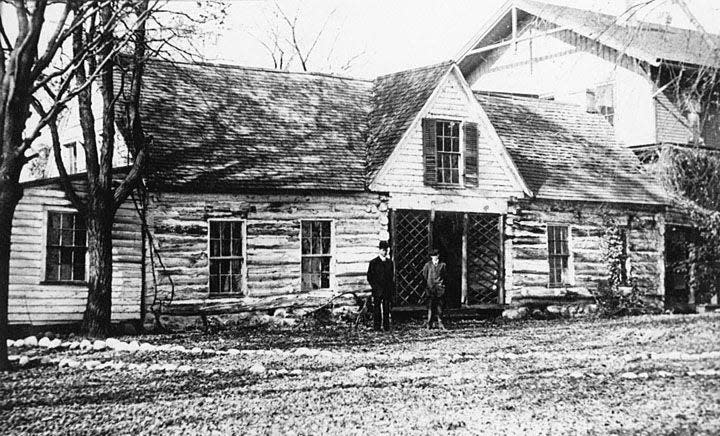
1848: Oak Hill Cemetery is established, making it one of the oldest municipal cemeteries in the U.S.
1849: Neenah and Menasha compete for the site of a government canal and lock on the Fox River. Menasha wins, but Neenah builds its own canal, finishing it in 1852.
1850: Brothers Harvey L. Kimberly and John R. Kimberly build the Neenah Flour Mill.
A bridge is built between Neenah and Doty Island at Cedar Street (now Commercial Street).
1856: Neenah incorporates as a village, and the plats of Neenah and Winnebago Rapids are consolidated as Neenah.
1860: The U.S. Census shows 1,296 people living in Neenah.
1861: The First National Bank of Neenah is founded. It would consolidate with two other banks in 1970 to form Associated Bank, the largest Wisconsin-based bank.
The Chicago & Northwestern Railway reaches Neenah.
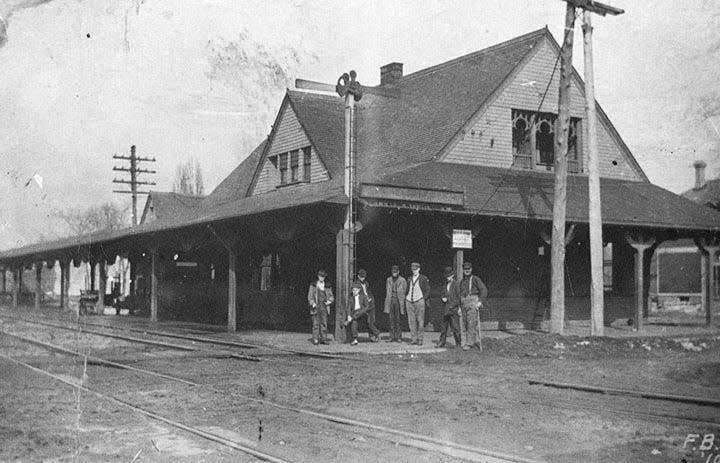
1864: Neenah-Nodaway Yacht Club is established.
1866: German immigrant Wm. Krueger starts a hardware business. It remains in operation today as Krueger's True Value and is in its sixth generation of family ownership.
1868: John R. Kimberly, John A. Kimberly and Havilah Babcock build the Reliance Flour Mill.
Four businessmen join forces to found Kimberly, Clark & Co.
1872: Kimberly, Clark & Co. is founded by John A. Kimberly, Charles B. Clark, Havilah Babcock and Frank C. Shattuck. They open the Globe Mill, the first in Wisconsin to produce newspaper from linen and cotton rags.
William Aylward establishes Aylward Plow Works, the forerunner to Neenah Foundry.
Neenah buys 20 acres for Riverside Park.
1873: Neenah incorporates as a city.
Neenah Paper begins operation as the Neenah Mill of the Patten Paper Co. It would incorporate as Neenah Paper in 1885.
1876: George O. Bergstrom, Dedric W. Bergstrom and Havilah Babcock purchase Neenah Stove Works and rename it Bergstrom Bros. & Co. and then Bergstrom Stove Works Co. Hafemeister Machine Corp. now occupies the west part of the property.
1885: The Old Council Tree, a large elm under which the chiefs of Native American tribes gathered in council, is cut down when the federal government makes improvements to the Fox River.
1899: Jens Jersild creates the Jersild Knitting Co. to produce Scandinavian-style sweaters. The business would grow into one of the largest knitwear manufacturers in U.S.
1900: J. E. Chapin founds the Boys' Brigade after talking with six boys who wanted a place to meet and have military training.
1902: The Neenah Opera House, later known as the Neenah Theatre and Neenah Cinema, holds its first performance, which is Shakespeare's "Hamlet."
Complications from childbirth lead to Theda Clark Memorial Hospital
1903: Theda Clark Peters gives birth to a daughter at home. Three days later, with no hospital nearby, she dies from complications of childbirth. In her will, she leaves $96,000 for a community project. Her family uses the money to build a hospital.
1904: D. W. Bergstrom and his son John N. Bergstrom purchase Winnebago Paper Mills and establish Bergstrom Paper.
The Neenah Public Library opens in a stand-alone building along the Fox River.
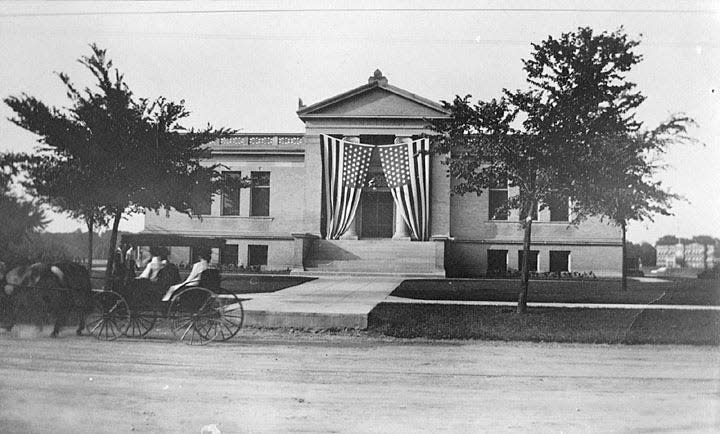
1908: The Neenah-Menasha Visiting Nurse Association is established to meet the health needs of families in their homes.
1909: Theda Clark Memorial Hospital opens with 20 beds, one operating room, one emergency room and one delivery room. Today it operates as ThedaCare Regional Medical Center-Neenah.
1911: The Young Women’s Club, the forerunner to the Neenah-Menasha YMCA, is established.
1913: National Jewelers Mutual Fire Insurance Co., now known as Jewelers Mutual Group, is organized.
Kimberly-Clark introduces Kotex and Kleenex following World War I
1914: Kimberly-Clark develops Cellucotton, which is used as surgical dressing during World War I. Recognizing the commercial potential of Cellucotton, it introduces Kotex sanitary napkins in 1920 and Kleenex tissues in 1924, turning the company's attention to personal care products.
1915: Shattuck Park is gifted to the city by Clara A. Shattuck.
1929: Helen Kimberly Stuart donates land to the city for Kimberly Point Park.
Neenah Senior High School opens on Division Street. Today it is Shattuck Middle School.
1932: Edwin Pierce Galloway purchases an interest in Neenah Milk Products Co. The Galloway family would fully acquire the business in 1956 and rename it Galloway Co.
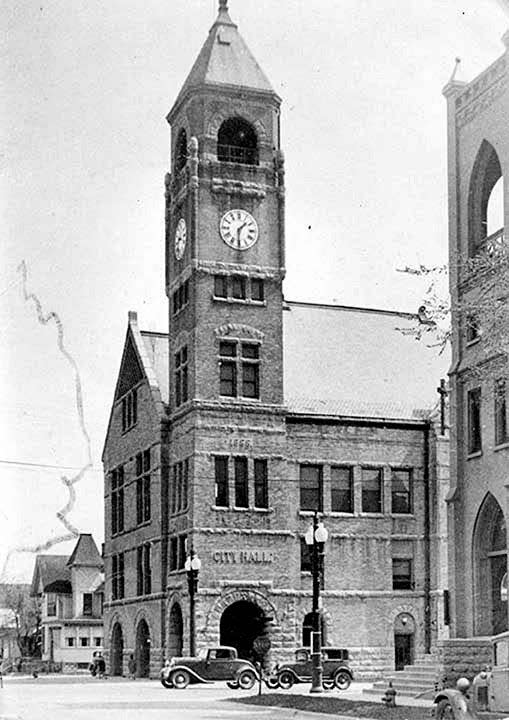
Neenah gets Olympic-size outdoor swimming pool along Lake Winnebago
1940: The city's Olympic-size swimming pool opens at Recreation Park overlooking Lake Winnebago, after C. B. Clark Jr. and S. F. Shattuck donated land and money for the construction.
1944: J. C. Kimberly donates money to have the Kimberly Point Park lighthouse built to guide boaters into the Neenah Harbor.
1949: Neenah opens the Oak Street bridge, providing a second crossing over the Fox River.
1952: Bergstrom Paper begins dumping paper sludge along the south shore of Little Lake Butte des Morts. The filled area would later become Arrowhead Park.
1954: About 20,000 people line Neenah's waterway on July 4 for the city's first Venetian Parade.
Bergstrom-Mahler Museum of Glass opens to the public
1959: The John Nelson Bergstrom Art Center opens to the public. Today it is the Bergstrom-Mahler Museum of Glass.
1962: Neenah purchases the 160-acre Henry Swatcheno farm on Tullar Road. The city keeps 105 acres for Memorial Park and sells 55 acres to the school district.
1966: James B. Conant Junior High School opens on the former Swatcheno property.
1972: Neil Armstrong High School opens on the former Swatcheno land, and Pickard Auditorium holds its first public event.
1975: The city's 1888 City Hall is demolished, but the clock tower is saved.
1979: Plexus Corp., a contract manufacturer of electronic products, is founded.
Bergstrom Paper is sold to P.H. Glatfelter Co.
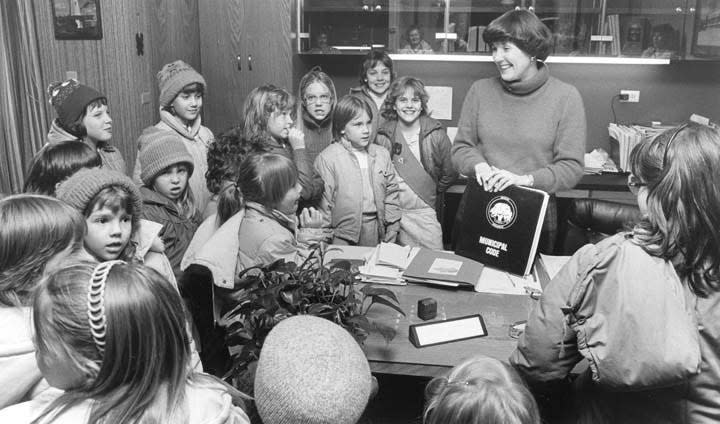
1982: Marigen Carpenter wins the first of four consecutive terms as mayor. She is the first woman elected mayor in the city's 109-year history.
1983: Future Neenah, a private, nonprofit organization dedicated to promoting economic and cultural vitality, is incorporated.
Kimberly-Clark moves its headquarters to Texas
1985: Kimberly-Clark moves its world headquarters to Irving, Texas, sending shockwaves through Neenah.
1993: A group of local investors led by businessman John Bergstrom opens two seven-story office towers in downtown Neenah. They are known as One Neenah Center and Two Neenah Center.
"Playing in the Rain," Neenah's first major outdoor piece of art, is dedicated at Riverside Park.
1995: Alta Resources, a telemarketing and customer care company for clients like Disney and SC Johnson, is founded.
1999: A third seven-story office tower, known as Three Neenah Center, opens.
Alta Resources and Plexus build corporate headquarters in downtown Neenah
2005: Alta Resources opens a $20 million corporate headquarters in downtown Neenah.
2006: The Glatfelter paper mill in downtown Neenah closes.
2007: Neenah completes the West Cecil Street overpass, giving the city its fourth east-west bridge over the Canadian National railroad tracks. The city also has bridges at Main Street, Winneconne Avenue and Breezewood Lane/Bell Street.
2010: Plexus builds a $20 million global headquarters in downtown Neenah on the site of the former Glatfelter paper mill.
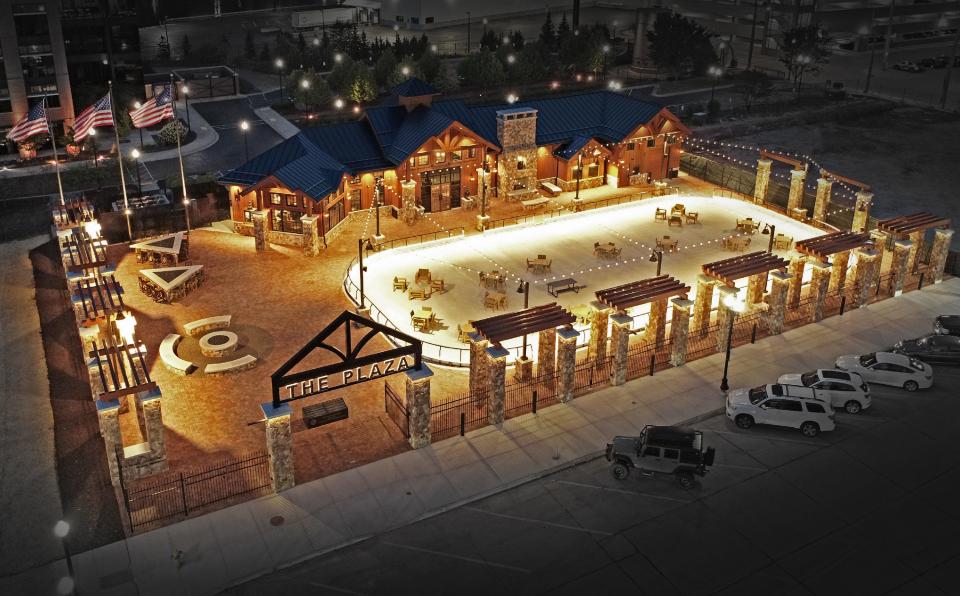
2021: The Plaza at Gateway Park, featuring a refrigerated ice rink that's the same size as the iconic Rink at Rockefeller Center in New York City, opens on the west end of downtown.
2023: Neenah celebrates its sesquicentennial.
Sources: The Post-Crescent; "History of Neenah" by G. A. Cunningham; "A History of Neenah" by S. F. Shattuck; "The Parks of Neenah" by William Dunwiddie; "Furs, Fir and Fourdrinier" by William Brehm; "A Tale of Twin Cities" by the Neenah Historical Society; Wisconsin Historical Society
Contact Duke Behnke at 920-993-7176 or dbehnke@gannett.com. Follow him on Twitter at @DukeBehnke.

SUPPORT LOCAL JOURNALISM: Our subscribers make this coverage possible. Click to see The Post-Crescent's special offers at postcrescent.com/subscribe and download our app on the App Store or Google Play.
This article originally appeared on Appleton Post-Crescent: Happy Birthday! Neenah's rich history spans from Kleenex to Plexus

